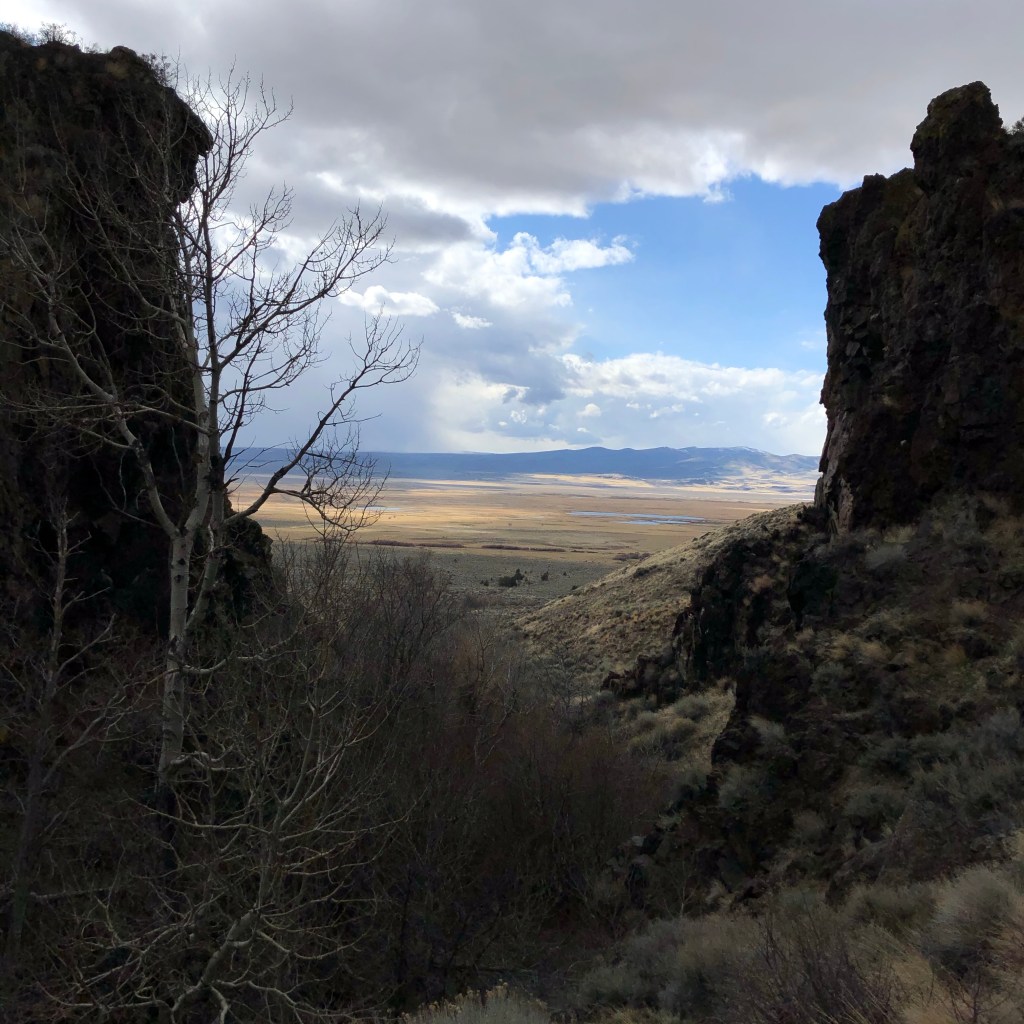
I guess I should have expected the snow, above 6000’ in the springtime. Flurries swirled around my car as I removed my leggings in the backseat and began cleaning my wounds. I was bleeding in four places, the largest of which was a grapefruit sized ooze of blood on my knee. What was supposed to be a quick, 3 mile warm up hike turned into an assorted practice of skills I’ve acquired over the last ten years in the woods.
How to navigate trailless canyons full of thorny brush.
How to step when gaining upon steep fields of melting snow.
How to traverses loose, snow covered boulder fields.
How to field dress a wound.
How to know when to turn around.
How to navigate by sight and evaluate terrain.
How to avoid getting your ankle crushed by a dislodged boulder.
How to stay calm when things get intense.
How to get your head back in the game.
How to self evacuate.
How to accept failure.
How to relish in it.
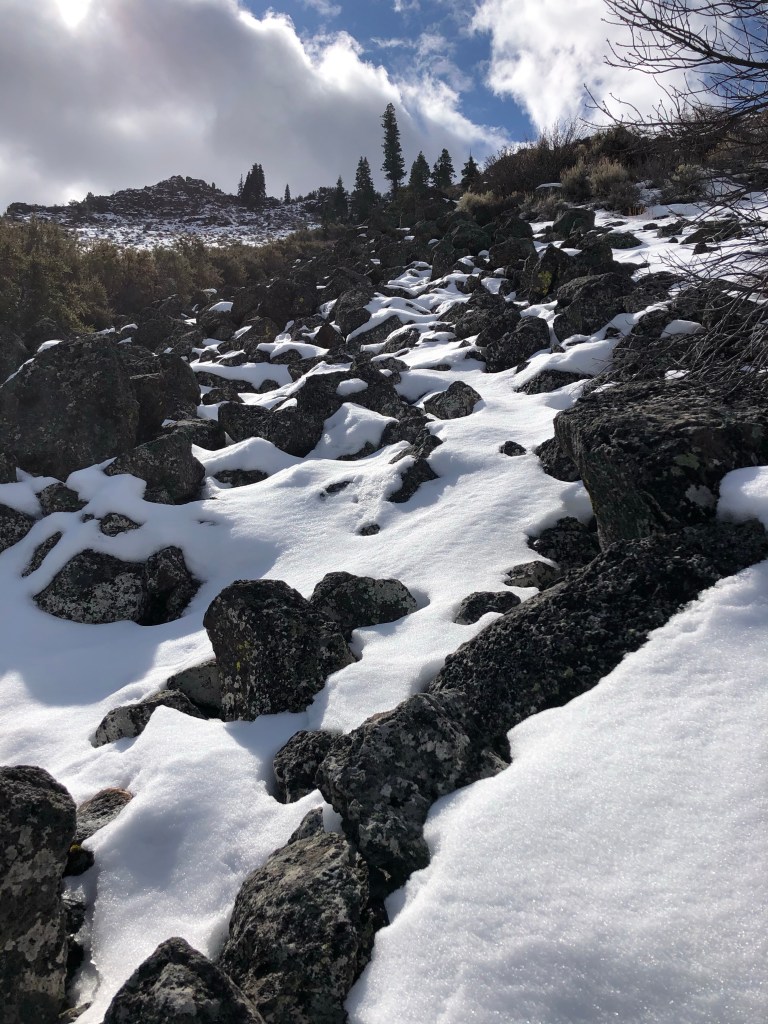
Later, with my knee buzzing slightly from the pain, I make my way into a canyon on the western flank of the mountain. I know this canyon well. There is a safe place to hide from the rain, to collect drinking water, and I don’t have to worry about the roads turning to mud if the storms linger through the night. While my water filter drips, I follow the creek upstream. Wind swirls, aspens chatter, clouds are ripping across the sky. House sized, red violet boulders protrude from the hillside, they look like ships caught in the crest of a giant wave.
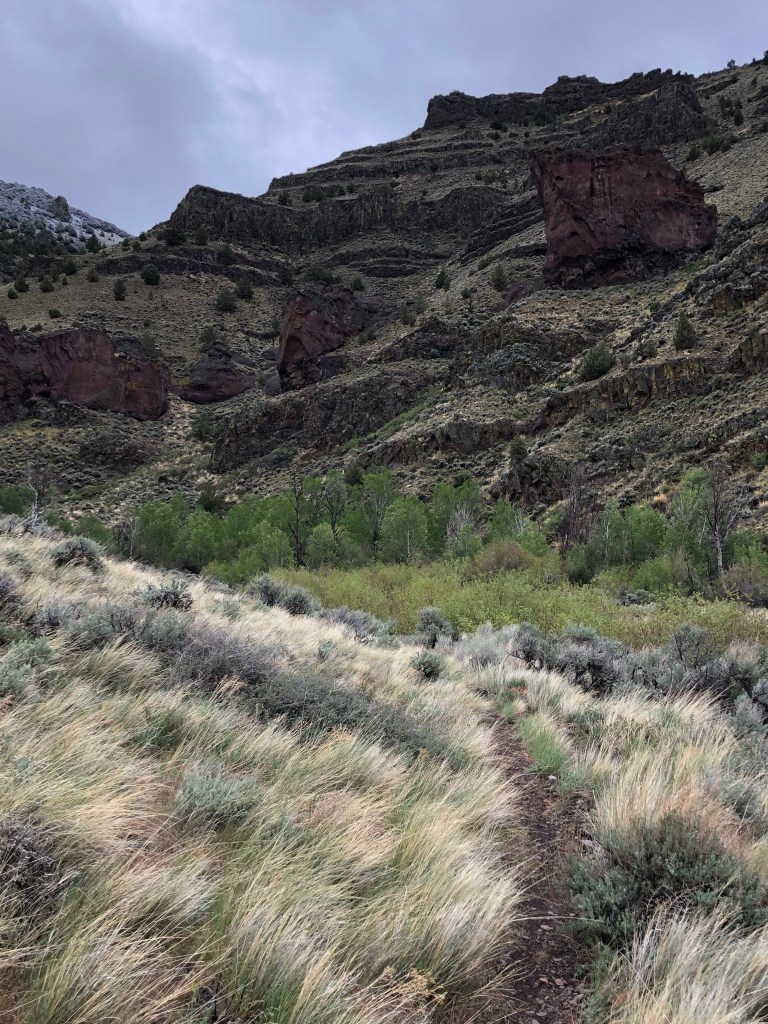
The sun is setting, the pain in my leg forgotten. I take my full water jugs and find a place to camp along the rocky beach of an alkaline lake. These lakes are the remnants of massive, Pleistocene era inland seas. Their waves are black. In the coldest parts of winter they freeze into a slurry of ice and the motion of the waves seems to slow. Like watching an inky black slurpee ocean crash against the rocky shore.
I eat instant noodles, drink tea, and think about the “real” ocean, where I was born.
To me, the desert and the ocean are like two sides of the same coin. I can watch the light change over the hills for hours, just like I can watch the waves break along the coast. Both are fascinating. The ocean always seems impassable, uncrossable, infinite, unforgiving. The desert is too, if you know the dangers well enough. I think about my close call on the mountain earlier. It’s like an old timer told me once, “…but only a fool tries to cross the desert”.
“Okay”, I said.
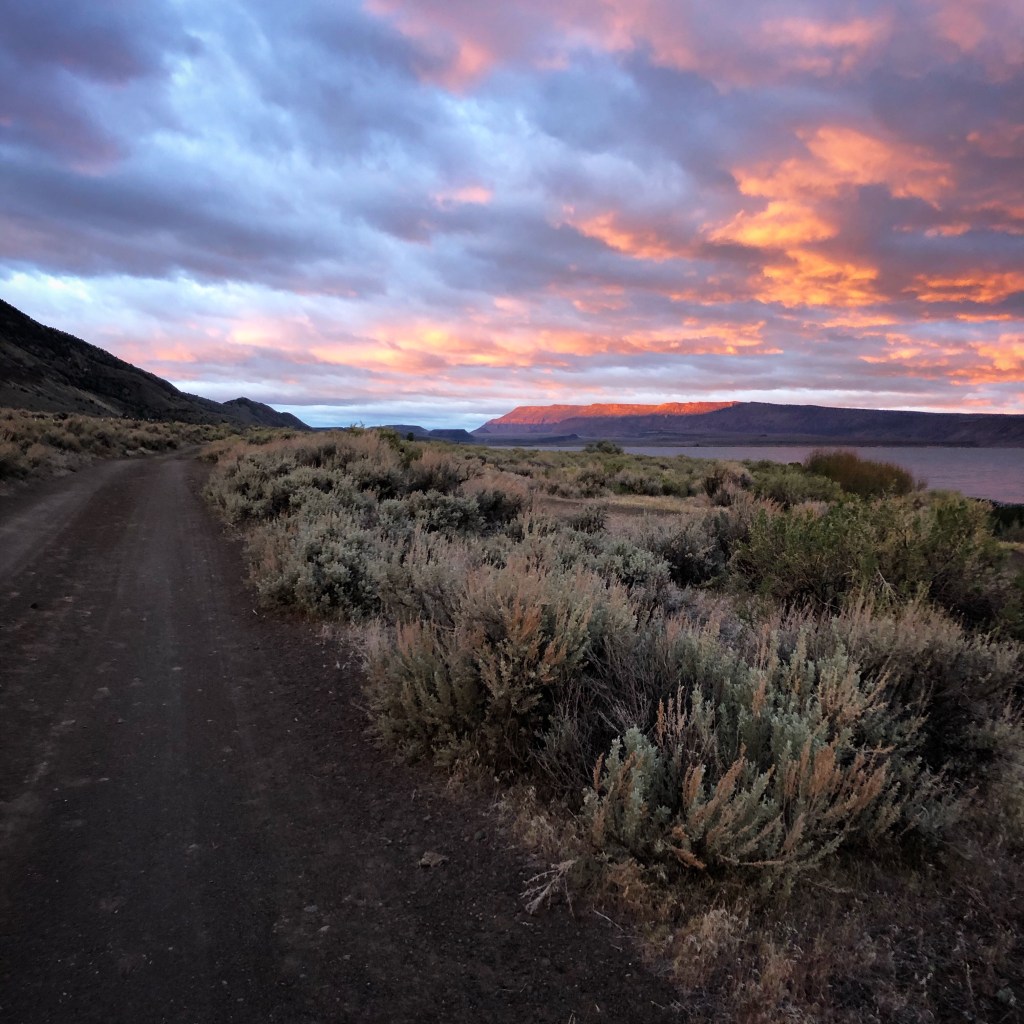
When the sun rises, I am already awake, shoving things around, getting ready to ride out to the canyons on the furthest side of the mountain. The dawn strikes a distant rim and is bright pink across the craggy face. I haven’t climbed that peak yet, either. I smile to myself as I toss my pack into the passenger seat, turn up the radio, and turn the ignition. I’m thankful for the warmth in my car this morning. Thankful for a shelter from the wind before my work in the canyon begins.
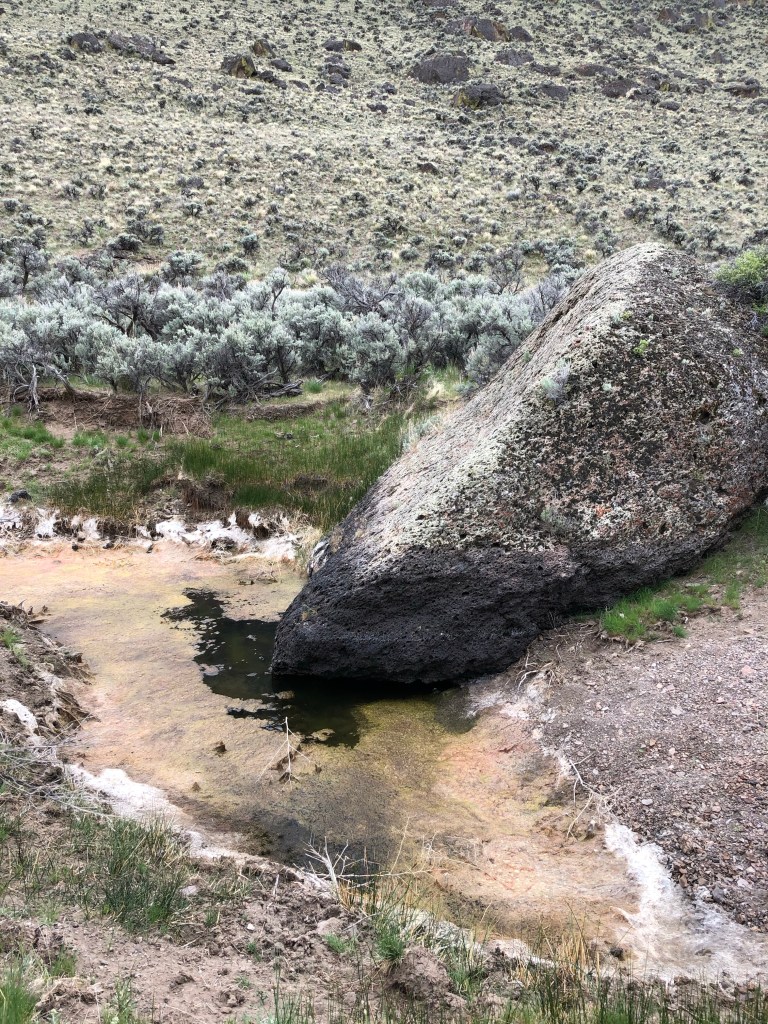
I found the place, but it took me a while.
After nearly 50 miles on gravel and dirt, weaving around the backsides of sprawling, ethereal lakes, several wrong turns, and a quite sporting, rugged road granting passage across the valley floor, I had finally reached the gates of this remote, unsociable place. Rimrock lined the canyon walls, massive boulders littered the valley floor, scattered throughout the mostly dry river channel. Each possessed its own creepy, brackish pond at its base, resplendent with robust algae colonies.
Some terrain cannot be run, and this was one of those places. I settled in to a comfortable, brisk hiking pace and made my way up the canyon; sometimes following the riverbed channel, other times taking the game trails through winding thickets of sagebrush and thorns. I never saw the animals, but I could feel myself being watched a few times. I do not mind; I always remember that I am their guest.
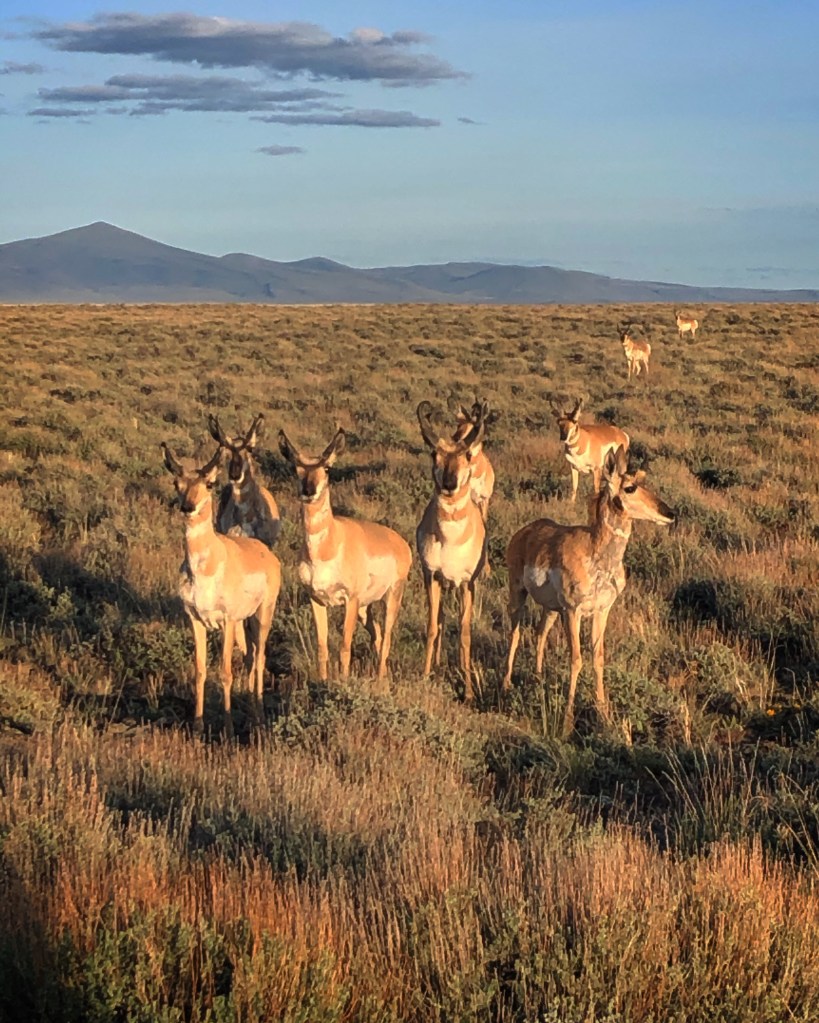
The otherworldly feeling of the canyon persisted, even as the landscape changed, flattened, rounded itself out. I took the old farm road out of the depths and up onto the flats again. The road leveled out as it wound it’s way around the mouth of the canyon, now obscured by the sagebrush sea spread out before me. You can see everything that is far away and nothing up close. The terrain is flat and easy here. I break into a run.
I love running downhill.
It’s all gravy until the weather blows in. I watch it coming across the valley. The first raindrops are warm and fat. A rainbow spreads across the horizon, snow clouds form on the rim of the mountain, and the wind really starts to rip. I resist the urge to increase my pace. My body is already sore; I’ve been out here nearly a week now. As the rain turns to sleet and then hail, it’s time to practice the things you’ve learned once more.
How to layer for various types of rain.
How to guard your face from the wind.
How to bundle your hands in your sleeves so they don’t go numb.
How to take your backpack off, open it and retrieve a snack without stopping.
How to run.
How to run when your feet hurt and you want to quit.
How to run when the rain turns to hail and catches you out on the flats with not even a rock to hide behind.
How to run when you are crying and you don’t know why.
Where do you go inside yourself when fatigue and boredom set it?
How do you stay present in all of it?
Everything is practice.

When I finally return to my car, the storm has passed, for now. The mountains beyond the valley are fully obscured by clouds. If I stay here, the road maybe be impassable by morning. I want to stay, but I decide the best course of action is to return the way I came. Also, the hot springs are over there, and my tired legs say, YES PLEASE. I hang my wet clothes up to dry along the windows of my car, crank the heat to 85, and hope my puffy dries out by morning. I rally back across the bumpy valley, behind the lakes, across the basin, up the face of the mountain all over again.
The hot springs are mercifully empty. I take off my clothes and stand naked in the cold air for a while, staring at the mountain. When I slip into the water, I feel like home. I feel like I belong. I am right where I want to be. Everything is just right.
But I don’t stay long.


Nice. I’m a transplant from the Sonoran Desert to the West Cascades. A lot of what you had was on my mind yesterday slogging through snow and streams in an awakening forest, except I saw one more person than you did.
LikeLiked by 2 people
Mike. Thanks for your comment. A decade ago I was living in New Mexico, and was indoctrinated into the desert hiking club that year during my time traveling through Arizona and California as well. Nothing quite like experiencing the vastness for yourself up close.
LikeLiked by 1 person
Reading this feels like flying.
LikeLiked by 1 person
Gorgeous country! Loved the sunrise!
LikeLiked by 2 people
This is spectacularly beautiful, in every way.
LikeLiked by 2 people
those third and fourth frames down are exceptionally beautiful, I really like those. It sounds like you’ve dealt with a lot of post traumatic stress at least in part from this accident you’ve described in your other writing and I hope the thoughts and images you share here are contributing in some small part to whatever healing is left. although of course that’s a very linear way of describing things. it’s not so tidy, is it? At any rate, cheers to continued rewarding travels and exploring in your backyard
-Jason
LikeLiked by 2 people
Oh my goodness. I came here ostensibly to leave a fairly standard thank you for your decision to follow Learning from Dogs. But then I saw what you had written and, also, the beautiful photographs you have taken. I was just bowled over!
Do you have a dog or two? Because if you do I would love you to write a guest post over at my place. Or give me permission to republish one of your posts? But I would prefer the former.
My dear wife, Jean, and me are both British. We met in Mexico in 2007 and I moved out permanently in late 2008 with my GSD Pharaoh. We came up to the USA in 2010 and were married and then came to Southern Oregon in 2012. We live close to Merlin, Josephine County and just love it to pieces. Originally we had 16 dogs but are now down to 6!
LikeLiked by 2 people
Paul, I enjoyed your comment so much. I am, tragically, allergic to dogs, and am unable to have one of my own. I must live vicariously through the lives of others, I’m afraid. You would be more than welcome to share one of my posts on you blog, I would be most honored.
I had grand plans to spend some time down your way in Josephine county this fall. Hopefully I’ll be able to make them up soon and you’ll see some familiar landscapes in future posts.
I hope you and your family are safe from the all fires and all this terrible smoke we are having.
LikeLiked by 1 person
What a shame about being allergic to dogs. I fell off my bike in 2017 and ended up in hospital. Strangely I became allergic to alcohol!
Anyway, I will look through your posts and find one that I want to republish. Thank you and if you find yourself in the Merlin area please look us up. (But we do have dogs!) Email me paulhandover (at) gmail (dot) com
LikeLiked by 2 people
I’m publishing this tomorrow. Do you mind telling me when you took this journey and where about, presuming Oregon, it is?
LikeLiked by 1 person
These photos are all from the SE corner of Oregon, reaching down into Northern Nevada. Hart Mountain, the Northern Warner Mountains, Abert Rim, Rabbit Hills, Summer Lake, and the formidable Catlow Valley.
LikeLike
Thank you! And I presume that you did this journey earlier on this year?
LikeLike
Yes, this spring.
LikeLiked by 1 person
Excellent captures of the vast and terrible beauty of the desert. I was driving northern Nevada yesterday and thinking, how did Native Americans traverse this place?!? I think by practice, as you are 🙂
LikeLiked by 2 people
What boggles my mind is to realize that earliest human vistitors travelled the area by canoe.
LikeLiked by 1 person
I’m just learning about the history here in the area, and the fossil beds with coral and such, from a local. Very interesting stuff!
LikeLiked by 1 person
Very nice post and wonderful photos
LikeLiked by 2 people